CommieGIR posted:No that's not how we got Fukushima at all. How we got Fukushima was TEPCO ignoring sound advice on the placement of their Generators and Backup Circuit Switchgear.
|
|
|
|
|

|
| # ¿ May 9, 2024 15:11 |
Phanatic posted:First you claimed " If you have an all nuclear fleet capacity factors of around 0.3 could be expected, which triples the price of nuclear energy.." Then Electric Wrigglies said "I think 30% utilisation of nuclear is an exaggeration even in a pure nuclear fleet." Then *you* said "30% isn’t an exaggeration, its the capacity factor of ERCOT’s generation fleet as a whole."  In the summer, peak demand is on average roughly 650 million kWh per hour, while in the spring the lowest power demand is only 320 million kWh per hour. Nuclear power currently has a very high capacity factor, because it is (by design) used to mostly cover the minimum power demand. If the power grid were to be mostly powered by nuclear power, then it would - by necessity - result in a lower capacity factor for nuclear power.
|
|
|
|
CommieGIR posted:In other news, Germany is shooting themselves in the foot.
|
|
|
|
CommieGIR posted:Yes, but its normally mixed with water. CommieGIR posted:The problem is exactly that. That they are unaffected by this vote. That they refuse to extend their lifetime, they'd rather double down on those coal plants than address the issue.
|
|
|
|
CommieGIR posted:The summary reflects that they plan to continue to close the plants on schedule, which will require more plants coming online to make up the difference. That is reflected in the summary. quote:There is no case where Germany will be able to close the plants on schedule AND not add more plants, especially in Winter. This is part of why the Dutch are asking them to put off the shutdown of the last 3 plants. In the end, this will both result in Germany massively missing their emissions goals and falling back on more fossil fuels for energy generation. The fact that nuclear power plants are several orders of magnitude better than coal, oil and gas power plants with regards to CO2 emissions is out of the scope of the problem being addressed by that law. That is something that was decided due to a slow societal development spanning half a century, ended by a haphazard back and forth by the CDU that cost the tax payer billions. quote:This is standard process for removing nuclides in contaminated metal, once its done the reactor is toast. Its commonly done relatively quickly after Power Off once the fuel is removed, and once its done there's no going back. Jaxyon posted:Are they reactivating coal plants, and deactivating nuclear plants at the end of the year? "The SDP-Green coalition has won a vote in the Bundestag backing more coal burning so that the three remaining nuclear plants can be switched off as planned this year. " Emphasis mine. That signals intent, which isn't there. I also like that they left off that the FDP are part of the coalition (and voted for the law), and that the Left (part of the opposition) also voted for the law. They are making it possible to (re)activate some coal plants that have been shut off or are held in reserve - if there is an acute lack of gas. It there is no acute lack of gas, nothing changes in comparison to before.
|
|
|
|
Jaxyon posted:As I said, you are technically correct about the tweet being misleading. The best kind of correct! CommieGIR posted:There's nothing inaccurate there? The plants are scheduled to go offline at the end of this year. What exactly are you actually arguing is wrong? The SDP-Green's could instead extend the closure of the nuclear plants till 2024 or beyond and avoid a lot of this. quote:They are not. And given Germany has been extremely vocal about their commitment to shutting down their nuclear plants, they don't need to say explicitly as to why they are spinning up standby coal plants. Its obvious as to why. The CDU and SPD bet big on (Russian) gas, while the CDU and FDP deliberately killed off the vast majority of the German renewable industry. Shortly after they did that, the CDU and FDP also put the final nail in the coffin of the German nuclear power industry as a reaction to Fukushima. Due to these things, Germany is a lot more dependent on fossil fuels and especially Russian gas than if those things hadn't happened. quote:Find something better to nitpick about the tweet other than Germany's commitment to double down on fossil fuels rather than deal with their fear about nuclear plants which emit 1/100th the emissions. What are you defending or attacking here? Germany is in the wrong with their current strategy. There has been no commitment to double down on fossil fuels by the current government. There has been a commitment to double down on renewables.
|
|
|
|
CommieGIR posted:Which they haven't done and are not going to be able to do. Germany's renewables only plan is not only in utter shambles, they are re-opening and bailing out their coal industry. They hosed up. Its over for at least the next decade or more. The vast majority of the EU is actively doubling down on Renewables + Nuclear and trying to get away from coal at all costs, Germany doesn't seem to be capable of both reading the room and admitting they are now in a bind from a half-assed plan based on fearmongering and lobbying by the fossil fuel industry. The doubling down on renewables plan was literally passed this week by the new government. Nuclear power provides 5-6% of power production. Coal currently provides ~30% of power production. Renewables (despite the "do nothing and see what happens" plan) provides 50% of power production. Gas provides 10-15% of power. How is nuclear supposed to replace gas or coal in the short-term? There is a short-term crunch due to the "buy cheap Russian gas" plan imploding due to a war. quote:https://www.france24.com/en/live-news/20211231-germany-to-close-nuclear-reactors-despite-energy-crisis Jaxyon posted:Yeah it's not a super weird totally amazing coincidence that the country known for it's large fossil fuel production industry is turning to fossil fuels in a time where we are undergoing a crisis created by fossil fuels.
|
|
|
|
CommieGIR posted:Your country has shuttered more nuclear plants than it will ever replace with renewables. Apparently it is possible. As it has already happened. quote:Sorry man, they are putting those coal plants on standby because they intend to close the last three in some stupid dedication to sheer madness. quote:I don't care what they passed, what they've done is have a worse carbon footprint than France next door, and they double down on closing the very things that make France one of the lowest emitters in the EU. quote:Their goal to decarbonize their energy is now going to be a decade behind because they openly made themselves dependent on Russian gas to enable them to shutter nuclear plants, and here we are and they are reaping it, and there answer is to double down on lignite coal. COAL! quote:At least admit shuttering their last 3 nuclear plants is bad, that's 15% of their total Electricity load. You have to at least admit that. Source: https://strom-report.de/strom/ Oracle posted:Which portion of that 50% of renewables is wood pellets?
|
|
|
|
CommieGIR posted:On a good day. Remind me again, Germany's not in an energy crisis, is it? It is? Oh. Germany is not facing an energy crisis because of renewables, but because of gas supply. CommieGIR posted:And France will continue to do it better, sorry. Germany's renewables only plan is a joke, and its hilarious to see them double down on something that isn't actually working. https://www.energate-messenger.com/news/223699/nuclear-power-plant-problems-make-france-an-electricity-importer posted:Nuclear power plant problems make France an electricity importer Jaxyon posted:Is it not the biggest producer in the world of the type of coal that is pretty much only used in power generation? DTurtle fucked around with this message at 01:23 on Jul 9, 2022 |
|
|
|
Potato Salad posted:It's also pretty hilarious to watch people cite "Germany is over half renewables!" with (1) the obvious gaping hole that is the rest of the (growing) fossil share  Doesn't seem to be growing (everything below red is fossil fuels). It would have started falling a lot further if nuclear power had not been shut off, but even so, fossil fuels are shrinking. quote:and (2) the slice of German "renewables" that involves importing entire forests from Africa and Southeast Asia at horrifying rates to burn as sacrifice to the German Green Party's false gods of "sustainability" and "stewardship." Looking at this source, the top source of wood imports for Germany in 2020 were: quote:Top trading partners (import of "Wood and articles of wood; wood charcoal") of Germany in 2020: MrYenko posted:I mean, they’re not German forests getting ground up and compressed into pellets, so it must be green, right? DTurtle fucked around with this message at 19:38 on Jul 9, 2022 |
|
|
|
mobby_6kl posted:But... there seems to be an issue. Nuclear output is like half of what it was in the winter and they're importing a ton instead. Although the total is also way lower, which makes sense if you're not using A/C and don't need as much heating and lighting. So here have another article from a month ago: https://www.nytimes.com/2022/06/18/business/france-nuclear-power-russia.html Some excerpts: quote:French Nuclear Power Crisis Frustrates Europe’s Push to Quit Russian Energy Since that article the French government has already announced that they will fully nationalize EDF (currently the government holds 80%).
|
|
|
|
mediaphage posted:I think energy storage is really going to grow by leaps and bounds over the next fifty. crazy number of approaches. not all of them are going to be any kind of chemical battery.  Such an easy, obvious, foolproof, scalable, cheap, space-efficient, CO2-free solution*. I wonder why no one else had this extremely feasible idea! *Note: none of this is true. They have even already built a scale pilot system starting in 2018, finished in 2020, which is why pictures exist of this system fully loaded*:  *Note: not quite fully loaded. Since that was already such a winning solution, they've already iterated on this excellent solution, by replacing the speed limiting usage of the 4 cranes and the slightly difficult and dangerous stacking of large amounts of blocks, with a system of elevators: 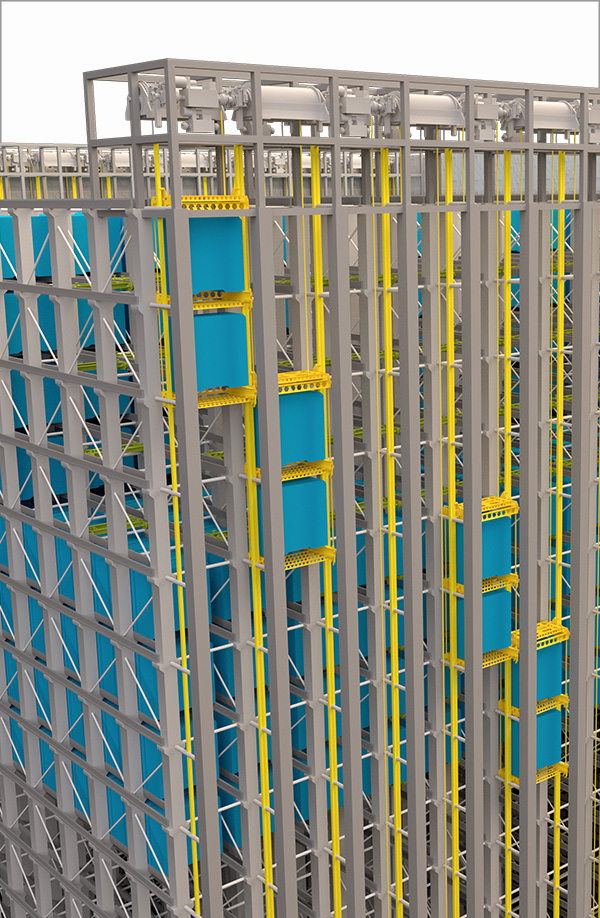 This makes switching from coal plants to cool renewable generation with storage a simple three step process: 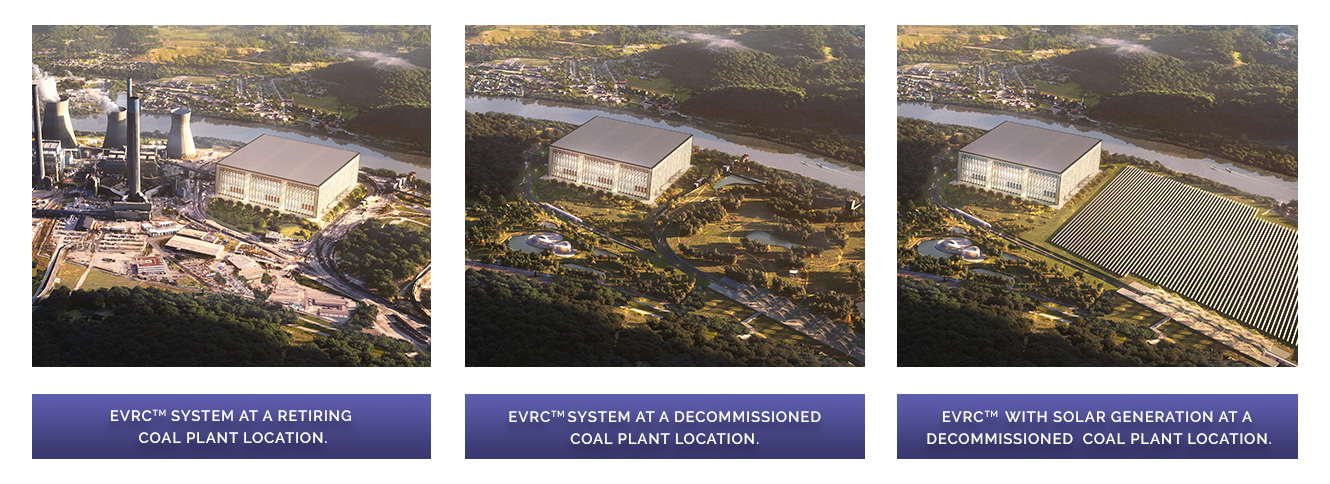 Bing, bong, boom! So easy and simple! Better invest in this extremely serious and quickly growing company before its too late. It is listed on the New York stock exchange after a completely serious and open merge with a SPAC in February. Starting at only $9.39 it quickly reached a high of $21.64 in April! Please ignore that is has since lost 70% of its value and is currently trading at $6.63 DTurtle fucked around with this message at 20:17 on Jul 20, 2022 |
|
|
|
|
So are we just completely ignoring the stated long-term mass storage solution being favored and pushed by the EU as a whole, every (western) European country individually, and also many other states on the periphery of Europe?
|
|
|
|
Potato Salad posted:Completely ignoring? No, absolutely not. Battery baseload is an extraordinarily responsive technology and it's going to be an important component of solutions long term.
|
|
|
|
Potato Salad posted:Reread the thread, I guess. "REPowerEU Plan posted:... Kaal posted:Are you some sort of hydrogen fan? Certainly that's being pushed more than any alternative. Explain what you mean rather than being arch and cryptic.
|
|
|
|
CommieGIR posted:The inverse being true: There is little evidence that battery deployments will ever meet or outpace our energy demand, so that also seems like a dead end. Might as well give up now, because we wouldn't want to invest in long term projects regardless of the real, proven benefit.  Source Obviously at some point that will slow down, but we don't know at what rate of new storage that will be. DTurtle fucked around with this message at 20:20 on Jul 21, 2022 |
|
|
|
Phanatic posted:It's not a thing. Hydrogen comes from steam reformation of natural gas. quote:But in no case is it a method of generating power. quote:If you had abundant nuclear power, you could get it from cracking seawater. If you have abundant renewables, you could use hydrogen to load-shift, cracking seawater into hydrogen when the wind blows and burning the hydrogen when the wind doesn't.
|
|
|
|
Kaal posted:Green hydrogen isn't the plan, the plan is to rebrand Russian fossil gas as "clean energy". Europe is not even close to being able to supply its current electricity needs with renewables, much less electrify its transportation, heating, and industry, then start creating green hydrogen at 30% efficiency. On the other hand, there's a rainbow of "transitional hydrogen types" available from gas, oil, and coal that the fossil fuel companies are itching to sell (and collect carbon subsidies on like biomass). It's greenwashing, pure and simple. There is an absolute ton of this thread dedicated to the rise and fall of hydrogen over the last 10 years. quote:EU Hydrogen Strategy (July 2020) Kaal posted:In 1985, 35.9% of global electricity came from low-carbon sources. By 2021, that had skyrocketed up to 38.26%. If we're judging the future by how well we're doing, then we'll reach our 2040 net zero goal by approximately 2964. CommieGIR posted:That is wholly insufficient, again, we generate and consume hundred of terrawatts hours of just electricity a year.
|
|
|
|
Kaal posted:Ultimately, I think there's little doubt that the same group of fossil fuel lobbyists that created Germany's failed Energiewende policies also promoted the "clean hydrogen" dream. The intent is clearly to hook Europe on Russian gas the same way that Germany is, with the rather empty promise that it will some day become low-carbon. But just as Germany's Putin-whispering was irresponsible foreign policy, converting all of Europe to fossil gas is irresponsible climate policy. As for that article: Widespread electrification and efficiency gains have been part of any push to reach high penetration of renewables. Of course it would be infeasible to replace all gas 1:1 with green hydrogen. Green hydrogen is supposed to be used where no other possibility is likely with regards to energy density, etc. So things like certain industrial processes, planes, large ships, longer term storage, etc. Also, it has long been a part of the EU‘s outlook that energy imports will continue to be necessary. Which is why there are constant talks with other countries around Europe with regards to developing green hydrogen infrastructure. CommieGIR posted:Then comes the part where they only pretend to do part 2 and you get Blue Hydrogen.... DTurtle fucked around with this message at 06:24 on Jul 22, 2022 |
|
|
|
Wibla posted:I should have been clearer in my previous post, I am referring to mixing in hydrogen from electrolysis in this instance, there would be no point in making hydrogen from natural gas and then mixing that back into the natural gas lines going out to consumers DTurtle fucked around with this message at 20:21 on Aug 21, 2022 |
|
|
|
|
Apparently it wasn't too expensive, as it has already been invented and the first commercial sites have been running for several years already. The advantage of power to gas (whether hydrogen, or even more so methane) is that the infrastructure to store and use it already exists.
|
|
|
|
His Divine Shadow posted:If it grows locally and harvested in quantities that are sustainable sure. Something tells me that since it's the germans, they'l probably import it from abroad in quantities that are anything but and probably fell some old growth forests while they're at it. The vast majority of wood used for heating (especially pellets) is sourced from production scrap/sawdust. Old growth forests are not being razed just to produce firewood.
|
|
|
|
Phanatic posted:That’s just false. The article you posted about wood being exported for heating was about wood from South Carolina being exported to the UK.
|
|
|
|
|
So, the stress test with various grid operators in Germany has finished. As a result, one of the last three nuclear power plants in Germany will be shut down at the end of the year as planned. The other two will be put into standby until April 2023, in order to be available as an emergency reserve. Article: Germany to delay phase-out of nuclear plants to shore up energy security quote:Last two working plants were due to be mothballed, but will be used as emergency reserve into 2023 after Russia cuts off gas
|
|
|
|
mobby_6kl posted:Hmm, the 15TWh figure sounds familiar... https://fsr.eui.eu/the-role-of-gas-storage/ posted:The EU-27 gas storage capacity amounts to 1147 TWh across 18 Member States Now if only there were a way to generate that gas from electricity. https://en.wikipedia.org/wiki/Power-to-gas Oh right.
|
|
|
|
|
Once again the Greens in Germany show that they can put practicality ahead of ideology: Germany plans to keep 2 nuclear power plants in operation quote:Germany will keep two of its remaining three nuclear plants on standby until at least April 2023, as the country also secures other alternative energy supplies to make it through winter.
|
|
|
|
His Divine Shadow posted:Edit: 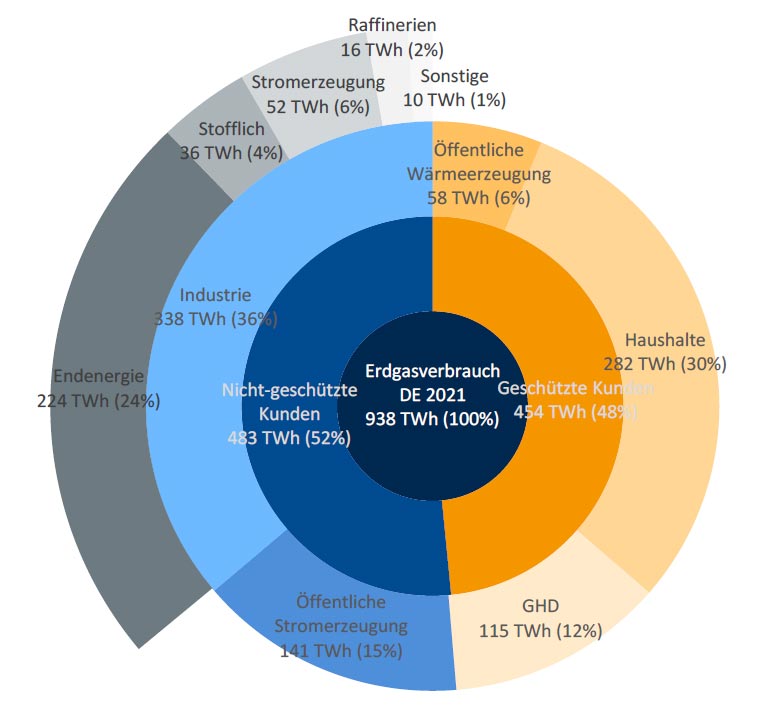 15% is public electricity generation + 6% electricity generation by industry. 30% is home heating. Translations: Erdgasverbrauch: Natural Gas Usage (Nicht)-Geschätzte Kunden: (Not) Protestes übers. Öffentliche Wärmeerzeugung: Piblic Heating Haushalte: Households GHD: Commercial Öffentliche Stromerzeugung: Public Electricity Generation Industrie: Industry Endenergie: End Energy aka Heat Stofflich: Material Stromerzeugung: Electricity Generation Raffinerien: Refineries Sonstiges: Other DTurtle fucked around with this message at 20:51 on Oct 5, 2022 |
|
|
|
VictualSquid posted:If you interpret silence_kit's recent posts as 100% renewables then I feel justified in interpreting a lot of posts here as 100% nuclear. After huge gas price increases and a massive campaign about possible energy shortages that could supposedly be averted through delaying the shutdown of the last three nuclear power plants, there was large support for having them not shut down yet. There was also an associated increase of support for building new ones, but still only a minority. Politically it is still impossible, and will stay so until the next federal elections in 2025. By that time all the nukes will be decommissioned and I would be very surprised if the energy situation at that point would still be in such a delicate state that the nuclear lobby will gain a lot of traction in the public sphere.
|
|
|
|
Electric Wrigglies posted:"Renewables alone" is also in the same boat (another 20 years and the problems will be solved) since the 90's. In the meantime, the tech has been incremental. Things have gotten a bit cheaper here and there and windmills are a lot larger and better placed but nothing that drastically changes multi-day or seasonal storage issues or intermittency. In Australia, bigger gains have likely been achieved by getting mum and dads to install overpriced generation on rooftops out of their own pockets (sometimes subsidized by government/others) than all the advances in renewables tech advances combined. 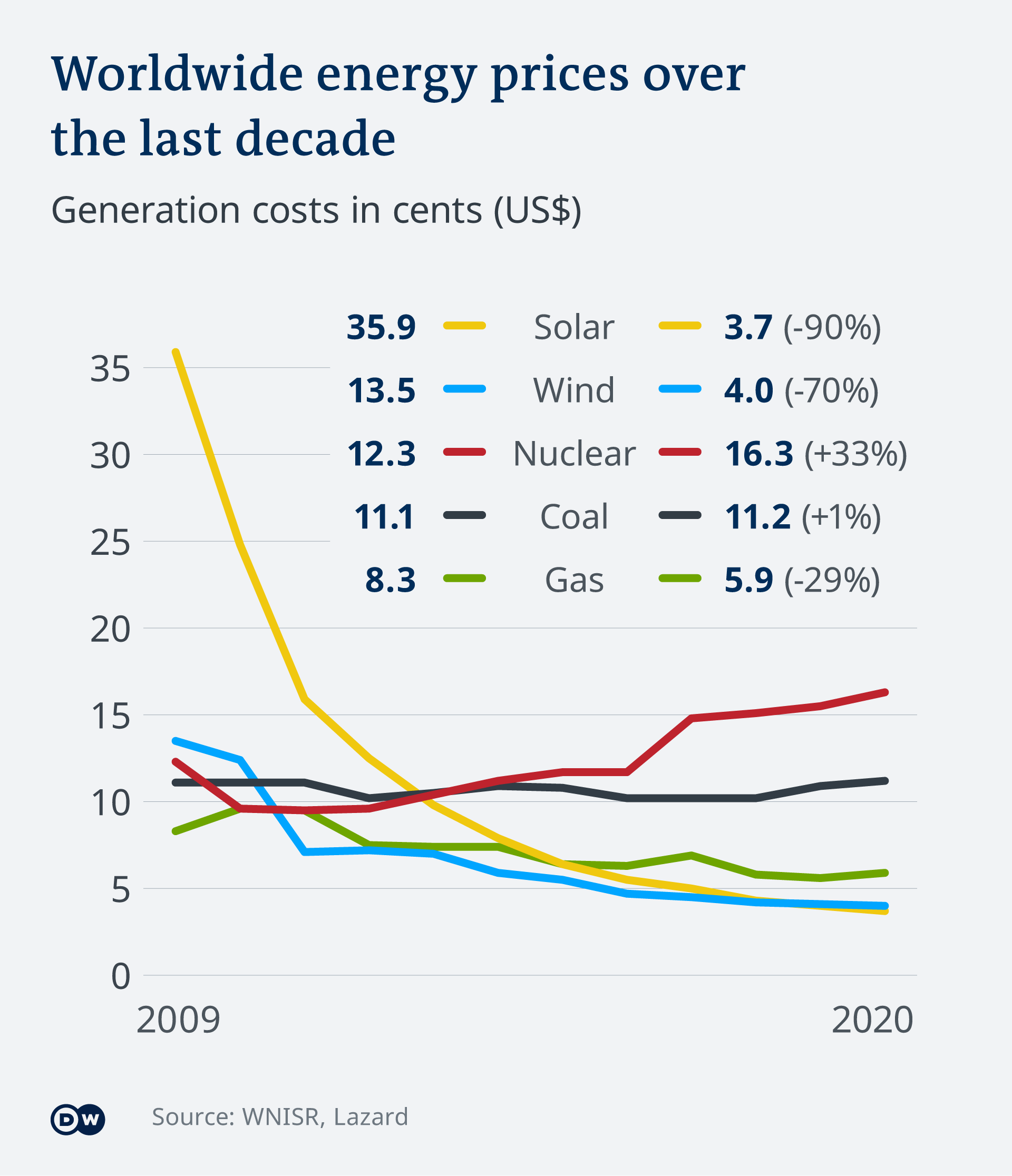 I think that 90% and 70% cost reduction within the last 10 years alone is a bit more than just getting a bit cheaper here and there. It suggests that renewables are very definitely in an extremely different situation in comparison to 30 years ago. 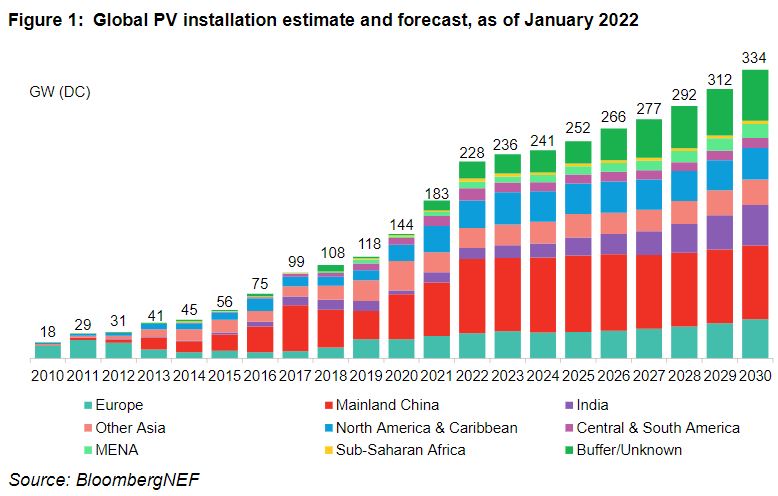 In addition, the installed capacity per year of solar power is already massively increasing. 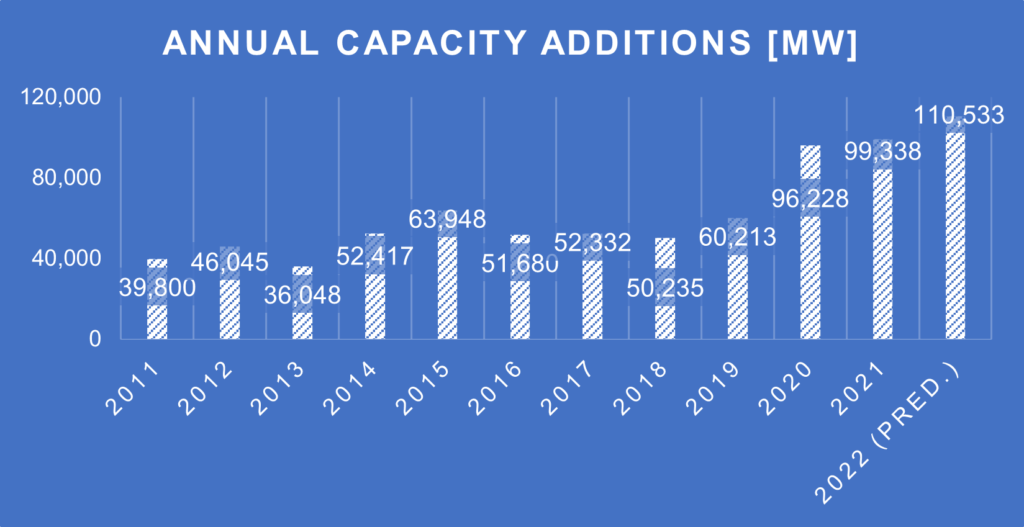 And so is wind. DTurtle fucked around with this message at 21:42 on Nov 29, 2022 |
|
|
|
|
I‘m simply objecting to the statement that renewable energy is in the same boat as nuclear energy with regards to addressing its problems in the last thirty years. Solar power costs, for example, are a tenth of what they were ten years ago and the yearly capacity addition are ten times what they were ten years ago. That‘s the kind of change that, for example, makes previously uneconomic storage solutions - like power to gas - a lot more viable. Which actually could make it possible to heat Toronto through the winter. DTurtle fucked around with this message at 23:40 on Nov 29, 2022 |
|
|
|
cat botherer posted:Random thought: Have there been any proposals to use a stirling engine or something to partially recover energy used in liquefying hydrogen, as like some kind of combined-cycle deal?
|
|
|
|
|
Salt cavern storage is compressed hydrogen and mentioned in both your sources. Natural gas pipelines and storage tanks can be (and are) filled with hydrogen up to a certain percentage. That percentage is currently relatively low (a few percent), but it is apparently possible to increase it to 50 or so percent relatively easily. All of that is compressed gas. Germany‘s natural gas infrastructure, as an example, provides storage for hundreds of TWh of energy for compressed natural gas. Converting that to compressed green hydrogen (or methane from CO2 + green hydrogen) would mean that physical storage is not a problem - being able to economically and efficiently fill that storage is the problem.
|
|
|
|
Bedshaped posted:Liquid or gas hydrogen is definitely not an effective storage option due to the inherent low energy density and challenges in storage. Cost, efficiency, scale for converting back and forth are the problem.
|
|
|
|
His Divine Shadow posted:Installed capacity or actual generation?  Renewables = Hydro + Wind + Solar + Bio 
DTurtle fucked around with this message at 18:32 on Dec 12, 2022 |
|
|
|
|
At how many are they now? And how much of capacity? Another article mentioned that they are now at the highest level since March, but didn't say anything about how far away they are from normal levels.
|
|
|
|
His Divine Shadow posted:Germans angry and dissapointed at getting what they voted for, google translated. In exchange for all of that, more coal will be extracted in the time range up to 2030 (but still overall less than had been agreed to in the last agreement).
|
|
|
|
Bedshaped posted:Does anyone think CCS and flue gas capture is a reasonable approach for the concrete or steelmaking (or some other process that can't be electrified) industries?
|
|
|
|
mobby_6kl posted:Probably not news news if anyone's been following, but Germany is going to order 25GW worth of new gas plants: https://www.cleanenergywire.org/news/germany-use-tenders-build-25-gigawatts-new-gas-power-plants-2030-econ-min
|
|
|
|
Somaen posted:Are there any good articles or discussion on the previous pages re:hydrogen? I think this thread doesn't talk about it while it's in the news constantly, presented as the future with a lot of backing from European states. One particular claim that's odd is the EU wanting to use the current gas pipes for hydrogen in the future which seems unreasonable, isn't hydrogen an order of magnitude or two leakier than natural gas? https://forums.somethingawful.com/showthread.php?noseen=0&threadid=3505076&pagenumber=290&perpage=40#post525000419 And here (it takes several posts to go into storage and using existing natural gas infrastructure) https://forums.somethingawful.com/showthread.php?noseen=0&threadid=3505076&pagenumber=306&perpage=40#post528051319
|
|
|
|
|

|
| # ¿ May 9, 2024 15:11 |
|
Cool graph - where is it from?
|
|
|
|








